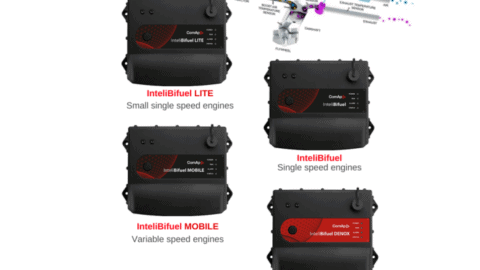By Ron Astall, United Pumps Australia
Some pump curves look different. When a pump curve has a hump in it or a high point away from zero flow it is said to be “unstable”. A “stable” curve has maximum head at zero flow and a negative gradient (constantly falling) as flow increases. A stable curve is sometimes known as a “CFC” or Constantly Falling Curve.
The term “unstable” sounds a bit scary. Should we be afraid of a pump with an unstable curve?
The answer is sometimes but certainly not always. There are indeed situations where a stable curve is mandatory and for this reason, manufacturers now rarely offer an unstable curve in their published catalogue, but in most pumping systems, an unstable pump curve will work just as well, and may even be better where a flatter pump curve can assist in circumstances where it may be desirable to maintain pressures over a range of flows.
Some pump types such as those with low flow high head radial vane impellers have inherently unstable curves. The real question is whether a pump will operate in a stable fashion in a particular system.
To answer this question, we need to understand how pumps interact with their systems by understanding the concept of the system curve.
See examples of stable and unstable curves below.
The System Curve
Consider the process involved in establishing the operating differential head of the system and the pump.
The differential head or system head is the energy required to move the liquid through the system. The pump provides this motive energy or head – but the system characteristics determine the differential head at the point of operation.
There are three components to the differential head :
Static Head Difference
- the difference in levels between the starting point and the finishing point of the system.
Pressure Head Difference
- the difference in static pressure between the starting point and the finishing point of the system.
Frictional Resistance
- the head due to the resistance to flow as the liquid moves through the system.
Of the three components, only the frictional resistance changes with flowrate. It is realised that system levels and pressures may in fact change at different flowrates due to vessel capacity, but for the purpose of system analysis these are not considered to be dynamic changes that are inherently linked to flowrate (as is friction).
If there was no pipe friction, the pump differential head would be simple to calculate and would be constant regardless of flow. The system resistance as seen by the pump would just be the sum of the difference in levels and the pressure difference (expressed in terms of head). This is the minimum head which the pump must develop to hold station (prevent back flow) at zero flow. As flow increases through the system, the frictional resistance must be added to give the total system resistance.
It is a valuable exercise to construct a curve showing the increase in total system resistance against system flowrate. This curve is called the SYSTEM RESISTANCE CURVE (above) and it is this curve that controls the flowrate of the pump – not the other way around.
This System Resistance Curve shows the head required by the system to move the liquid through at a given flowrate. A pump will operate where it’s performance curve intersects the System Resistance Curve (above centre) as shown by the dotted lines.
Actual on site performance will be given by the intersection of the pump curve with the actual System Curve.
System Stability
Let us look again at examples of “stable’ and “unstable” pump curves.
Overlaying the System Curve on the pump curve will show us where the pump will be operating.
If there is only one possible operating point then the pump and system combination will be stable.
Steep System Curve
When a system consists of mostly frictional resistance, it is termed a steep system curve.
A more detailed analysis of pumps operating in parallel will be covered in another discussion; however it is worth noting that unstable pump curves operating in parallel with other pumps can lead to system instability due to unequal sharing of the load.
Flat System Curve
When a system consists of mostly Static Head or Static Pressure difference, it is termed a flat system curve.
So what are the lessons here?
For single pump operation in a system with mostly frictional resistance (steep) there is no disadvantage associated with an unstable pump curve. The majority of pumping systems would fall into this category.
If you do not understand or do not know the shape of your system curve (steep or flat) then the safest option is to choose a pump with a stable curve.
Stable pump curves are also recommended when operating two or more pumps in parallel.
Most important of all; understand your system.
View part one of this series, Understanding pump curves here.
View the next article in the series, Understanding pump curves #3: centrifugal pumps in parallel here.




















